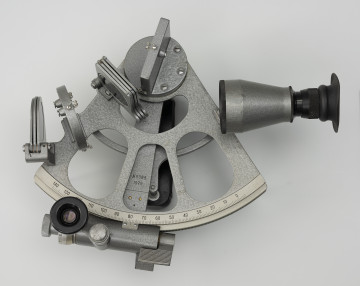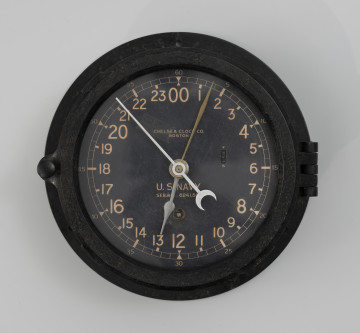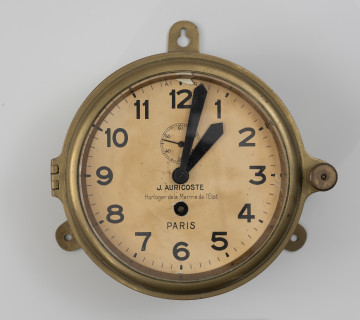
SNO-T sextant
circa 1976
National Museum in Szczecin
Part of the collection: European classics of modernity
Born in Georgia, Stanislav Horno-Poplavsky owed his first contact with contemporary art to visits to the Moscow Museum of Fine Arts. While still in Russia, he decided to study art, but he considered his first patron to be Tadeusz Breyer, in whose studio in Warsaw he received his diploma (1931). The environment of the Warsaw School of Fine Arts, which followed the principles of New Classicism, and then trips to France and Italy turned the artist's attention to the archaic cultures of the Mediterranean Sea and medieval sculpture. Horno-Popławski became enthralled with the Egyptian Gallery in the Louvre and Chartres Cathedral, at the same time discovering the works of the masters of modernity, Émile Antoine Bourdelle and Aristide Maillol. Their synthetic approach to form and, at the same time, their firm grounding in tradition became the motto of the young Pole, who began to find success in stone sculpture. While teaching at the Faculty of Fine Arts at Vilnius University until the end of the thirties, he left his first monumental realisations in Lithuania: the furnishings of the Cathedral Basilica, the temples in Antokol, Rudziszki and Orniany, and the fountain in the courtyard of the Representative (now Presidential) Palace in Vilnius. The crisis of the first years after the end of the Second World War spent in Bialystok, Torun and Sopot did not allow for extensive use of precious materials. Forced to work in the hated plaster, Horno-Popławski could only exceptionally reach for his favourite stone. Two versions of the portrait of Marynarz [The Mariner] - cast in bronze (1948) and cast in granite (1949) - were a vivid commentary to the artist's move to the Tricity, where he received a professorial post at the Higher School of Fine Arts. Both works use the arrangement of a head facing the raised left shoulder. The echo of this composition can also be heard in the Szczecin sculpture consisting of three independent elements: a wooden plinth and granite heads and a fragment of a collar. Simplification of form was characteristic of Horno-Popławski's post-eruption sculptures, which thanks to economical and precise processing brought out the natural beauty of erratics. The idea of piling up separate stones or placing several elements on a platform appeared in his works in the early 1960s probably under the influence of Surrealist sculpture.
Szymon Piotr Kubiak
Author / creator
Dimensions
cały obiekt: height: 34 cm, width: 43 cm
Object type
sculpture
Creation time / dating
Creation / finding place
Identification number
Location / status

circa 1976
National Museum in Szczecin

1941 — 1945
National Museum in Szczecin

1901 — 1950
National Museum in Szczecin
DISCOVER this TOPIC
National Museum in Szczecin
DISCOVER this PATH
Educational path